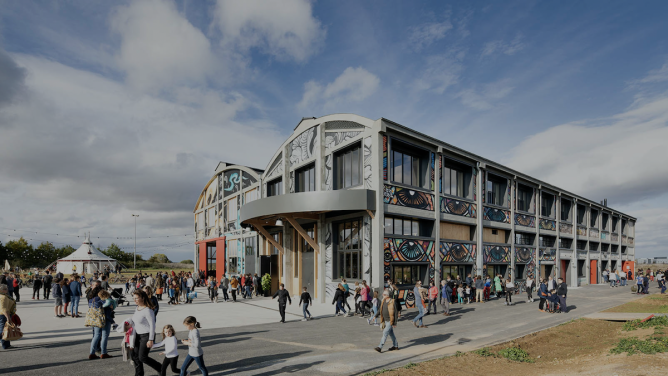Cities occupy roughly 2% of the planet’s surface, represent 50% of the population and are responsible for more than 70% of global GHG emissions. They currently operate in a largely linear manner, based on the expression ‘produce, consume, throw away’. Of the 100 billion tons of minerals, fossil fuels, metals and biomass used each year, it’s estimated that only 8-9% are currently reused. Cities are responding by questioning the sustainability of their models and trying to put in place circular models, with initiatives such as C40. To avoid making reductive comparisons (like comparing circular economy to recycling, as often is the case), cities are exploring systemic approaches which take into account all aspects of circular economy. The urban metabolism method fits with this logic. According to Sabine Barles, professor in urbanism and urban planning at the Sorbonne University, it “refers to all energy and material flows brought into play by a given operational territory“. It sounds like the perfect lever for triggering increased systematic circular strategies.
Urban metabolism as an analytical framework
For Aristide Athanassiadis, doctor of architecture and planning at the Université Libre de Bruxelles, the urban metabolism approach has a number of advantages. First, it allows us to recognize and understand better the material and energy flows entering and leaving the city. It highlights the linear dimension of urban economies (a logic based on the expression ‘produce, consume, throw away’). A city’s level of consumption is expressed on an international scale, so the indirect impact can be measured. Precise maps can be made identifying the actors and the infrastructures behind such flows. Finally, it can be used to measure urban stock which is still under-optimized. “Urban mines enable us to identify the existing materials that we can use in the future, reducing the demand for primary resources,” explains the researcher.
These methods provide a foundation on which cities can build their own circular economy plans. Take Amsterdam, which is undoubtedly one step ahead of the game. It aims to become the first Circular City by 2050 and has put in place various ways to measure its progress. Thanks to The Monitor, Amsterdam is integrating urban metabolism at the center of its operations. Consumer goods, organic waste and construction materials are taken into account in a framework that doesn’t forget to measure the social impact of circular economy measures.
Adapting circular economy policies locally
“In Paris, it’s up to the authorities to set the example. In Brussels, we try to act a little bit on everything in a systemic way. Meanwhile, London relies on business models and entrepreneurs,” explains Aristide Athanassiadis. Whatever the city, a data-driven approach avoids dogmatic positions or generic formulas concerning the circular economy.
The Plaine Commune district in the north of Paris is the perfect example of when urban metabolism is adapted to the context. With the Grand Paris development plan in mind and the Olympic Games a matter of years away, the stakes are both high and specific. In this context, rubble recovered from the Grand Paris Express site can be used to produce new construction materials. In the same vein, waste produced locally from demolition and dismantling operations must be reused on the building site for Paris’ Olympic Village and the future Olympic Aquatics Center.
Systemic approach and political will
The overall view provided by urban metabolism does not only apply to waste management optimization. In the water and energy industries, the model is being used to connect and spark new networks between sectors and encourage new, unprecedented partnerships. With Ecopal, the French city of Dunkirk has developed in-depth knowledge in the area of industrial ecology. While the organic metaphor differs, the processes are actually similar. The local LNG terminal and an aquaculture farm both reuse water from the Gravelines nuclear power plant cooling system. Meanwhile, heat emitted from ArcelorMittal’s blast furnaces is pumped into the city’s district heating system. And IndaChlor is a recycling plant for chlorinated and production waste which provides steam to their neighboring alcohol producer, Ryssen Alcools.
This type of industrial ecosystem is an offspring of the renowned Kalundborg Symbiosis developed in Denmark in 1972. It requires real political and institutional backing. According to an in-depth report from ORÉE and the French National Institute for Circular Economy, the issue only come into view on a European level in 2015. Since then, there has been a flurry of ambitious policies. As part of the European Green Deal, 2020 saw a new circular economy action plan. Its aim? To transform the entire life cycle of products, while helping create 700,000 new jobs and generate a 0.5% increase in EU’s GDP by 2030.


